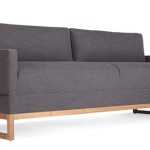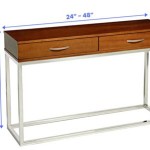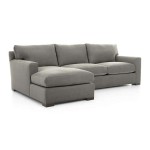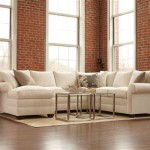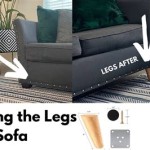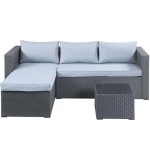How Much Does It Cost To Restuff Sofa Cushions?
Restuffing sofa cushions can revitalize a tired living room centerpiece and extend the life of a beloved piece of furniture. However, the cost can vary depending on several factors, making it essential for consumers to understand the variables involved before undertaking this project.
One of the primary cost drivers is the type of filling material used. Foam is a common choice, available in various densities and qualities. A higher-density foam will typically cost more but offer greater support and longevity. Down feathers provide a plush, luxurious feel and are at the higher end of the price spectrum. Polyester fiberfill is a budget-friendly option, but it may compress more quickly than other materials. Each material offers a distinct feel and lifespan, influencing the overall cost of the restuffing project.
The size of the cushions also plays a significant role in determining the cost. Larger cushions naturally require more filling material, thus increasing expenses. A standard three-seat sofa will generally cost more to restuff than a smaller loveseat. The number of cushions also contributes to the overall cost; more cushions mean more material and labor.
Labor costs represent another key component of the total price. Professional upholsterers typically charge by the hour or by the cushion. Rates can vary depending on location, experience, and the complexity of the job. Some upholsterers may offer package deals for restuffing entire sofas, potentially offering cost savings compared to restuffing individual cushions.
The condition of the existing cushion casings can also influence the final price. If the casings are damaged or worn, they may require repair or replacement, adding to the overall cost. Replacing zippers or patching tears will incur additional labor and material expenses. Consumers should factor potential casing repairs into their budget when considering cushion restuffing.
Beyond the core restuffing process, additional services can impact the cost. Some upholsterers offer fabric upgrades, allowing customers to change the look and feel of their cushions entirely. Adding decorative elements like piping or button tufting can also contribute to the overall expense. These optional services provide customization options but increase the project's total cost.
Obtaining multiple quotes from different upholsterers is recommended. This allows consumers to compare pricing and services, ensuring they receive a fair price for the desired work. Discussing the project in detail with each upholsterer helps clarify expectations and avoid unexpected costs. Providing clear measurements and descriptions of the cushions will assist upholsterers in providing accurate quotes.
Choosing to undertake a DIY restuffing project can significantly reduce costs. Purchasing filling material directly from suppliers and performing the labor oneself eliminates labor charges. However, DIY restuffing requires time, effort, and some basic sewing skills. It's crucial to factor in the cost of materials, tools, and the value of one's time when considering a DIY approach.
Several online resources and tutorials offer guidance on DIY cushion restuffing. These resources can provide valuable information on material selection, measuring techniques, and the actual restuffing process. Thorough research and careful planning are essential for a successful DIY project.
The decision to hire a professional or undertake a DIY project depends on individual circumstances. Factors such as budget, available time, and skill level should be considered. Professional upholsterers offer expertise and efficiency, while DIY projects offer potential cost savings and a sense of accomplishment.
Geographic location can influence labor costs, affecting the overall price of professional restuffing services. Urban areas with a higher cost of living typically have higher labor rates. Rural areas may offer lower labor costs, potentially impacting the overall expense. Researching local upholstery services provides insights into regional pricing trends.
When requesting quotes, it's important to specify the desired density and type of filling material. This ensures accurate pricing and avoids discrepancies between expectations and the final product. Clearly communicating preferences for foam density, down feather quality, or polyester fiberfill type ensures the upholsterer understands the desired outcome.
Inquiring about warranty or guarantee policies is recommended when hiring a professional. Reputable upholsterers often stand behind their work, offering guarantees on materials and workmanship. Understanding these policies provides peace of mind and ensures recourse in case of issues with the restuffed cushions.
The decision to restuff sofa cushions represents an investment in comfort and the longevity of furniture. Understanding the various factors influencing cost allows consumers to make informed decisions. Careful research, detailed planning, and comparison shopping empower individuals to achieve desired results within their budget.

How To Stuff Saggy Couch Cushions Under 50 Thetarnishedjewelblog

How To Fix Saggy Couch Cushions An Exercise In Frugality

How Much Does It Cost To Refill Couch Cushions Four Centuries

Easy Inexpensive Saggy Couch Solutions Diy Makeover Love Of Family Home

How To Fix Sagging Couch Cushions Thistlewood Farm

How To Make An Old Couch New Again For 10 Living Rich On Less

How To Fix Smashed Couch Cushions Honey We Re Home

How To Restuff Your Couch Cushions A Step By Guide

Easy Inexpensive Saggy Couch Solutions Diy Makeover Love Of Family Home

Sofa Cushions Beds Outdoor Seating Foam Cut To Any Size Shape Thickness

